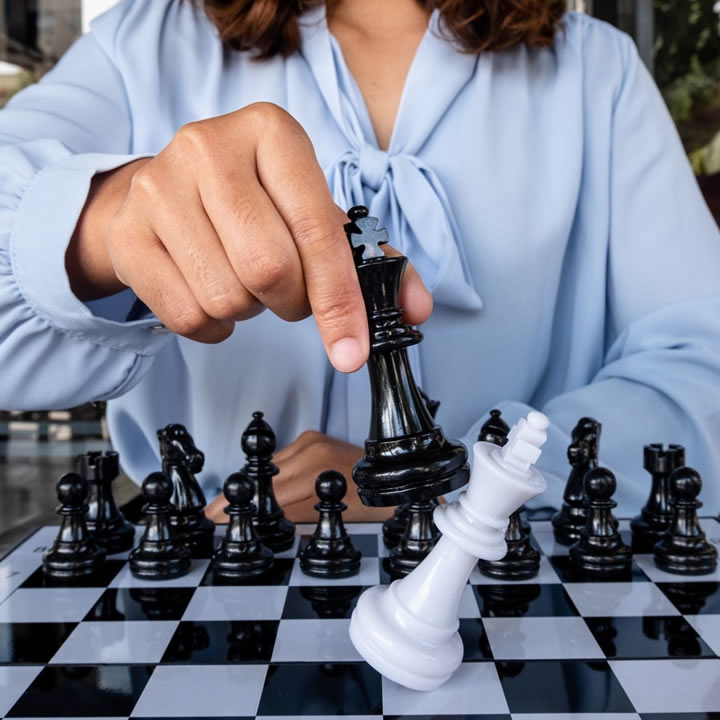Before playing a game of chess, it’s important to have your board set up correctly. Place the wooden chess board set on a flat surface such as a table or the floor (don’t put it on your lap). Do you know what the squares on a chess board mean? Where each chess piece should be placed? Find the answers to all such questions in this article.
How Should Your Board Look Like Before the Game?
Before the game starts, you must know to set up your chess board. A chess board can be any flat surface that has 64 total squares. Eight of these squares are white, and the other eight are black (the colors don’t matter). Each square should be 2 inches by 2 inches in size. If you use a different-sized board, be sure to convert all measurements accordingly.
How Should the Chess Pieces be Placed on the Board?
Each chess piece has its spot on the board. These spots are called starting points or initial squares.
You must place each chess piece in its correct starting point to move correctly during the game. If you place a chess piece on the wrong square, it won’t move at all. Plus, your opponent will get a chance to take their turn with that misplaced chess piece, so be careful!
- The king goes in the center of its color group.
- The rooks go on the corner squares (also called the files).
- The knights go on the edge of each color group (the black and white pieces).
- And finally, the bishops go on the two middle squares of the same color as they are.
What Points to Consider Regarding Placement?
The queen, pawns, and king cannot be placed on their starting squares during gameplay. They must move to them at some point in the game.
The king starts in the center of its starting square group. The white king goes on e1, and the black king goes on e8. The rooks go on the corner squares. The white rooks go on the files a through h (the first row), while the black rooks go on files l to k (the eighth row). The knights go on the edge of each color group.
So the white knight goes on a1 and b8, for example, while the black knight goes on c6 and d4. Finally, the bishops go in the middle of the two squares of their color.
How do You Move Your Pieces?
You can only move a chess piece to different spots on the wooden chess board set if it’s your turn. In your turn, you can only move one chess piece per turn (you’ll find out how to take multiple turns later).
- How Do Pawns Move? The pawn is the only chess piece that can’t move during gameplay. Each pawn has its starting point on the second row of the board. Once you capture an enemy piece or move out into one of your opponent’s starting points, you can now advance by capturing the next chess piece in the line (either diagonally ahead or straight ahead).
- How Do Rooks Move? Rooks move in straight lines. They can move forward, backward, left, or right, but not diagonally. They only capture pieces by moving sideways and checking on an enemy piece (meaning that it has no way of escaping). The rook’s piece then delivers a finishing blow to the piece, removing it from gameplay.
- How Do Knights Move? Knights move in an L shape (two squares up or down or over to the left or right, then one square forward). They can only capture pieces that are two squares away by moving sideways and putting a check on an enemy piece (meaning that it has no way of escaping). The knights’ piece then delivers a finishing blow to the enemy piece, removing it from gameplay.
- How Do Bishops Move? Bishops move in an X shape (one square diagonally forward or backward, followed by one left or right square).
- How Do Queens Move? Queens move in any direction except diagonally backward. They can capture enemy pieces by moving two squares in any direction. They can also offer protection to other pieces on the board by jumping over them (meaning that they block out an attack).
- How Do Kings Move? Kings move like queens except diagonally backward instead of forward. They must also jump over enemy pieces with every move. So it’s not possible to capture an enemy piece by moving directly toward it.
With a proper setup of your wooden chess board set, you can now play chess against your friends. Practice the basic rules of each piece’s movement, and you’re on your way!

